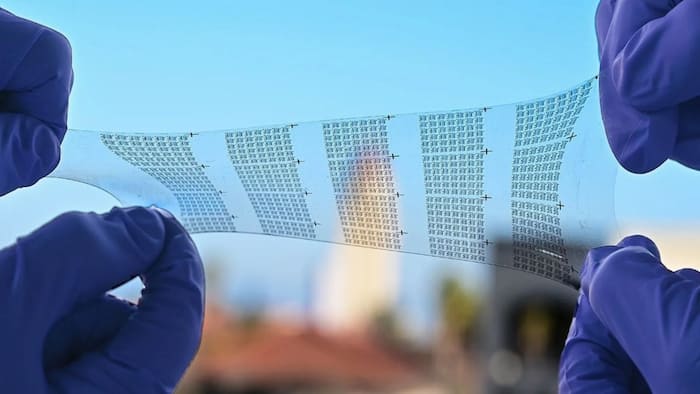
Written By Shubham Verma
Published By: Shubham Verma | Published: Mar 14, 2024, 03:29 PM (IST)


While smartwatches and fitness bands have added several different health-tracking features over time, they have still not been able to offer the kind of comfort most users would want. A few implantable and wearable devices are specifically designed to track health vitals and even detect a disease. They may not be mainstream, but scientists have proven they are more purposeful than regular health-tracking smartwatches. However, the problem with such devices is that they cause infection, tissue damage, or rejection from the body’s immune system. Scientists have claimed a new skin-like wearable screen could be the next big thing in the wearable industry. Also Read: Garmin Forerunner 970 And Forerunner 570 Launched In India, Price Starts At Rs 66,990: Check Specs, Features
According to scientists at Stanford University, a new wearable that emits the properties of human skin can help track health vitals and diagnose disease. It is smaller than most wearable devices and has a network of stretchable integrated circuits, which are “fast enough for many applications.” Scientists claim these circuits can operate at a speed one thousand times faster than previous such models. These circuits can even power a small LED screen while being capable enough to detect tactile information, such as reading Braille better than a human’s fingertips. Also Read: Amazon Prime Day Sale 2025: Best Premium Smartwatches under Rs 20,000 for Casual and Fitness enthusiasts
“We hope that this can make wearable sensors and implantable neural and gut probes more sensitive, operate more sensors, and potentially consume less power,” said Zhenan Bao, a K.K. Lee professor in chemical engineering at Stanford University and the senior author of the research paper published in the journal Nature. Also Read: Vijay Sales Announces Open Box Sale: Big Discounts On iPhone 15 Plus, Samsung Galaxy S25 Plus, Nothing Phone 2a, More
Scientists say this skin-like wearable with an LED screen is very similar to a rubber band. Much like rubber bands, it bounces back instead of snapping when stretched. This property allows the wearable to continue working without suffering any damage. Scientists claim they squeezed more than 2,500 sensors and transistors into a small film the size of a postal stamp. It can have several applications, but when talking about its use as an implantable device, the material is less likely to cause discomfort or issues to the human skin.
“…a high-density, soft, and conformable sensing array could allow us to sense human body signals, such as from our brains and muscles, at a large scale and fine resolution,” said Can Wu, a postdoctoral researcher in Bao’s lab and the paper’s co-first author. “This could lead to next-generation brain-machine interfaces that are both high-performance and biocompatible,” he added. The small LED screen on the wearable material can refresh 60 images in one second, representing higher display capabilities than previous versions of such materials.